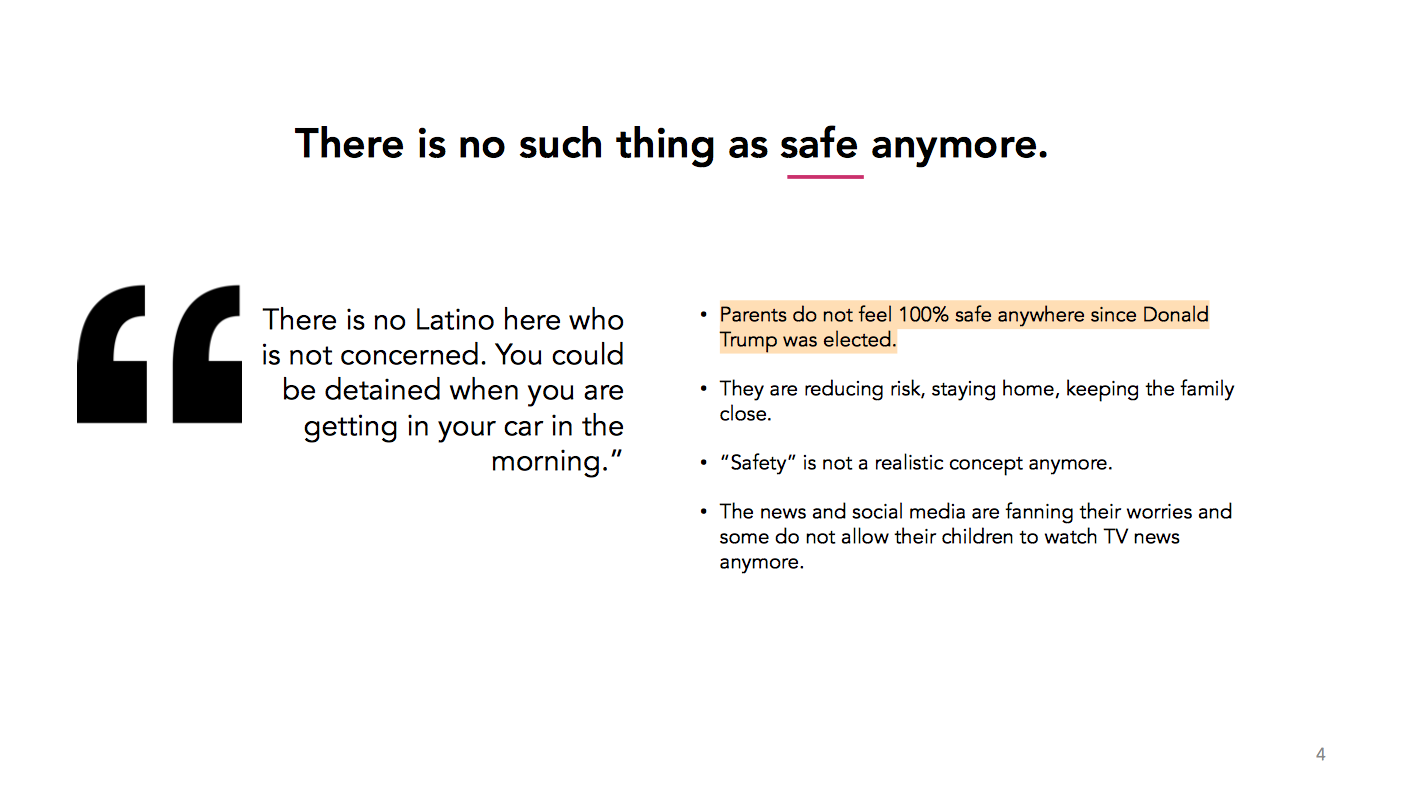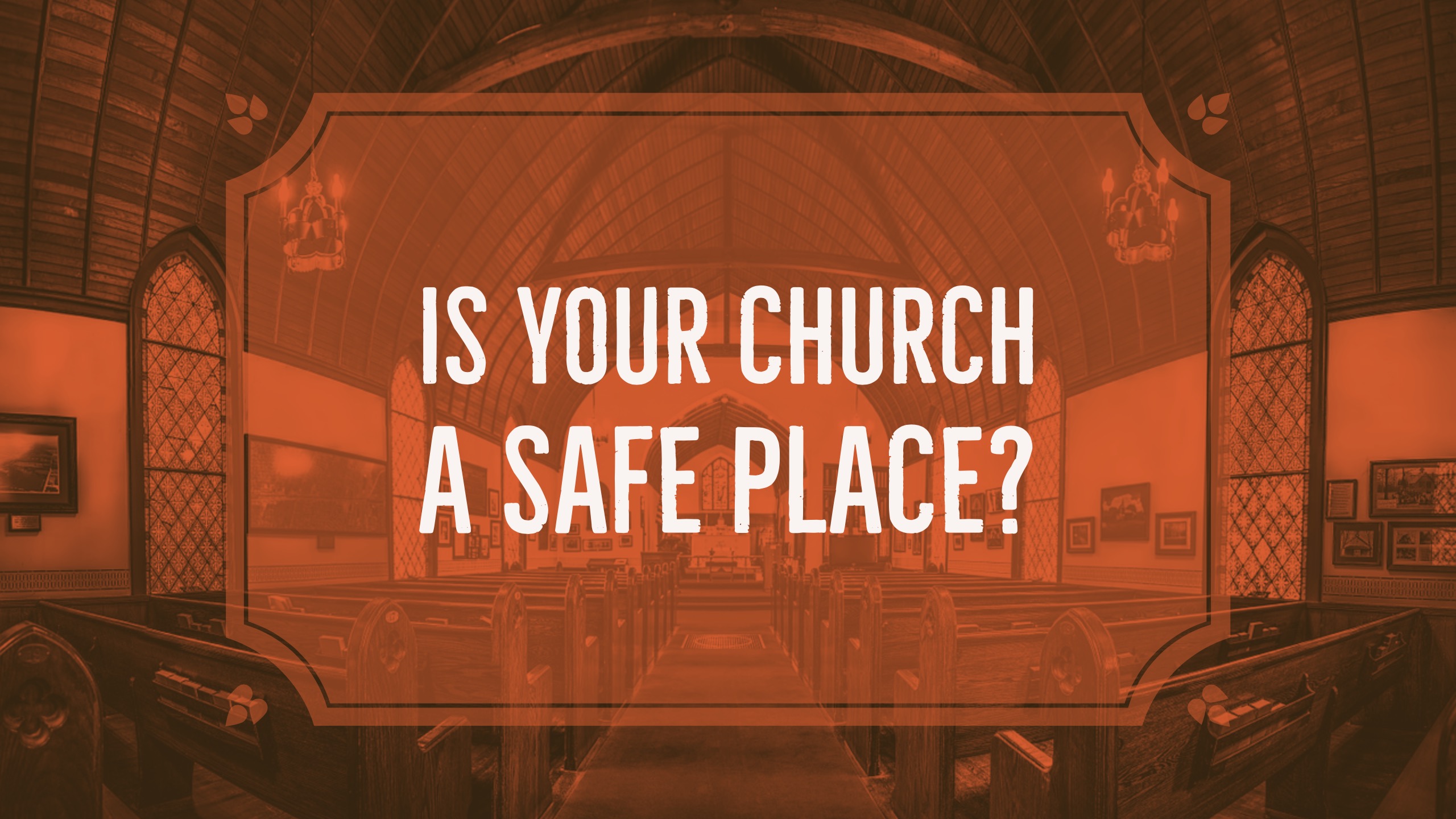Is your church a safe place for anyone in the community to come?
I know that’s a loaded question… “Adam, safe for whom?” In this case, I mean is your church a safe place to come regardless of immigration status? As a San Diego resident living in Mid-City you might imagine this is highly relevant as we live in a community of documented and undocumented immigrants and refugees.
But I’ve traveled around the United States enough to know that this is a relevant question for every community in America. Cities, suburbs, small towns– metropolitan areas and rural areas alike. You might not be aware of who is living in your community that might not have legal status but that’s because you just don’t see it. But if you look… I promise you will see it.
Churches Are Not Seen as Safe Places by Undocumented People
The other day a friend of mine sent me a link to a presentation about Latino family participation in state sponsored summer food programs related to his work with nutrition in public schools. After reading through the presentation I contacted the presentations author, George Manalo-LeClair, who serves as the Executive Director for California Food Policy Advocates, for permission to highlight some of his findings here on my blog.
Buried in the research was this revelation:

Based on interviews with undocumented parents, or those related to an undocumented person, Mr. Manalo-LeClair found that they feel safer taking their children to the local public school to participate in a free than a local church.
Literally, they don’t feel safe anywhere. According to the interviews, even those with legal status are talking about and making preparations in case they are detained.

Many families, especially those with mixed immigration status (e.g. families where the parents are undocumented but the children have U.S. citizenship) feel so unsafe in their communities that they have altered their entire lives, living in a new reality.

Families are feeling so at-risk that they are not participating in government assistance programs for fear that their participation may lead to their deportation. This includes going to a state sponsored free meal program.

As the presentation documents, even families who are food insecure are deciding against allowing their kids to go to programs that offer free food because they don’t want to appear as participating in too many government programs. Literally, they are forced to chose between their kids eating or not eating because they don’t feel safe. “For some parents, the biggest concern about summer meal programs is their immigration status.” (Page 17)
And where is the church?
There is a perception in the undocumented community that the local church is not a safe place to go… Of course, what would lead them to that conclusion?
It is well known, even in undocumented communities that in November 2016, according to Pew Research, 81% of evangelical Christians voted for Donald Trump, the person they see as the root cause.

And so this leaves parents with a gap in trust. They trust the public school where their child attends– a place where the board has stood up and proclaimed that ICE will not raid and that ICE will not target parents as they drop off or pick up their children from school– is a safer place that will provide their children refuge.
But they don’t trust the local church for that. Why? Because they’ve been silent.
What Churches Ought to Do Right Now
Churches have been places of sanctuary and refuge for centuries. Since the early church, when Christians were known for taking in widows and children, the church has made their worship space available as a safe place.
The historical precedence of the church as sanctuary and refuge is beyond question. It is our heritage as the bride of Christ who offers protection and refuge for sinners.
Two weeks ago our family toured the Cathedral in Mexico City. As I’ve seen in the great churches of the world the sanctuary was open to the public and while tourists by snapping pictures, parishioners come for mass, and the weary come to rest. Even our own family, having walked several miles that day, sat down in the pews to take refuge, to rest or feet and rehydrate, without anyone telling us to leave.
People are safe in the sanctuary and the public knows it.
This begs the question: Is your church safe? Can people come to your worship services or programs without worry? Do they know that they can come there for refuge?
This isn’t a political hot button, it’s a moment for education of your church on our heritage as Christians. You will literally be standing with billions of Christians for millennia by making sure your community knows that your church is a safe place.
Your Action Plan:
- Educate yourself. Take 20 minutes to read through the presentation I’ve linked to above as well as their suggestions for things you can do in your organization to create a safe place for families and children regardless of immigration status.
- Eliminate the ambiguity. Ask your church board to put in writing a policy stating that the church property and programs will be free from immigration agents, that they will not cooperate nor provide information regarding immigration status of any person that is part of or seeks refuge at the church.
- Make it known. Make sure the congregation is aware of the board’s policy. I recommend mailing a letter (or emailing) to every attendee. Likewise, post it near the entrance so visitors and newcomers know.
- Have a plan. Part of this policy needs to be educating staff and volunteers about what to do if an immigration official shows up. Who do they contact? What information will or won’t be shared? What responsibilities or expectations are placed on staff and volunteers to intervene?
For additional reading I recommend: “How Churches Can Give Sanctuary and Still Support the Law” Christianity Today – March 2017
Friends, this isn’t about politics. This is about the church being the church. While I think it’s great that undocumented families see public schools as a safe place, it hurts my heart that they don’t see the local church the same way.
My hope is this is cause for introspection and correction.
Please, let our churches be places where we experience the good news of Jesus as much as we hear about the Good News of Jesus’ work on the cross.
Facebook commenters: Please include the number “619” in your comment on Facebook so I know you’ve read this post. And thank you for your continued participation in my social media experiment.

Leave a Reply